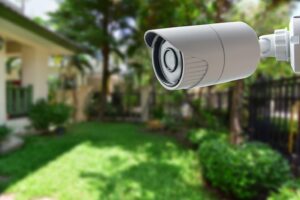4 Tips To Cover Blind Spots in Your Home Surveillance System
 While modern home surveillance systems offer exceptional monitoring capabilities, they can sometimes come with blind spots. Blind spots are areas in your home not covered by your surveillance system and are potential entry points for intruders. Learn four effective tips for eliminating blind spots in your home surveillance system.
While modern home surveillance systems offer exceptional monitoring capabilities, they can sometimes come with blind spots. Blind spots are areas in your home not covered by your surveillance system and are potential entry points for intruders. Learn four effective tips for eliminating blind spots in your home surveillance system.
1. Research Potential Camera Placement Zones
Consider which areas you want and require the most surveillance at all times. Determine any weak points or areas that would make good targets for thieves. If you recently moved into a new house, try to find out whether the previous owners had ever suffered any criminal activity so you can be prepared for potential risks.
Examine your building layout and decide where the best places are for security cameras once you’ve determined the sections that need coverage. Position all cameras within close proximity of the surveillance location, taking into account the camera’s detection range for each individual monitoring zone. Choose lens that will help you avoid the most blind areas given your floor plan.
Take pictures of the places you want to protect from where you want to put the cameras. You can use this to calculate the type of lens you require, the distance at which your camera should be, and the size of the viewing area.
2. Protect Your Cameras From Vandalism
The best preventative measure to safeguard your surveillance equipment from vandalism is to place them at a height that is challenging to access. For instance, to make it more difficult for anyone to interfere with your camera, it should sit on the second floor if it is put directly in front of an entrance. Find the ideal location because mounting a surveillance camera too high may degrade the quality of the captured video.
Investing in vandal-proof gear is a fantastic additional option to safeguard your cameras. Most high-quality cameras use durable materials that can survive inclement weather and physical accidents. This stops potential burglars from damaging property and interfering with your video surveillance.
3. Consider Wide-Angle Cameras
Wide-angle surveillance cameras are a good option if you require a thorough video monitoring solution that monitors all angles because they can easily and successfully minimize blind spots. The positive aspect is that you can ensure you never overlook an event by choosing from various cameras and lenses.
The panoramic fisheye surveillance camera is one of the best solutions to consider in a wide-angle camera. This robust tool offers a 360-degree surround vision with minimal blind spots, unlike the traditional camera. Additionally, its robust auto-tracking capability eliminates the burden of simultaneously monitoring several regions.
A Pan/Tilt/Zoom (PTZ) camera can be a better option if the price of the fisheye surveillance camera is slightly out of your price range. The PTZ camera can swivel and zoom to record additional video. This is particularly helpful if you want to photograph a person’s face or a license plate.
4. Install Additional Lighting
Additional security lighting provides illumination in any potential blind spots in the vicinity you want to monitor. Lighting assists your cameras capture a good picture, particularly during the night.
Assessing the current lighting in the area is the first step in selecting security lights. Examine how naturally illuminated the area where the cameras will be placed and any potential nighttime lighting schedules. Especially add more lighting to ensure you can discern what is happening if the photos from your surveillance camera are too dimly lit.
Remember that infrared CCTV cameras may require specific lighting to produce a good outcome when selecting the right security lighting. Infrared cameras are more sensitive to certain types of light than human eyes. Therefore, you’ll need to know which lights are ideal. Consider including motion detectors in the illumination system as well since these may switch on the lights when a person is nearby.
Contact us at A Tech for technical guidance and help installing security cameras in Des Moines, Cedar Rapids, and Iowa City, IA.
